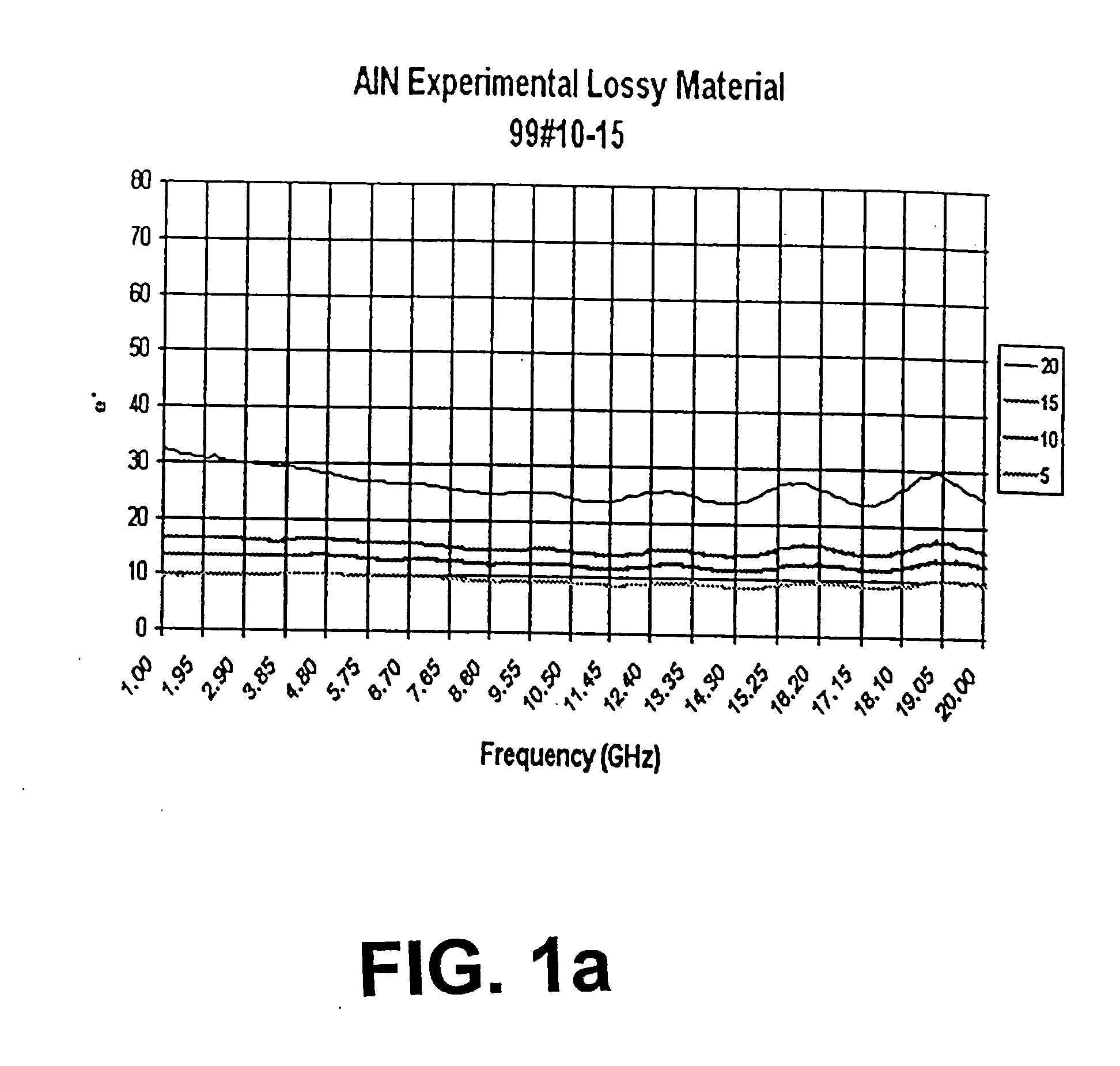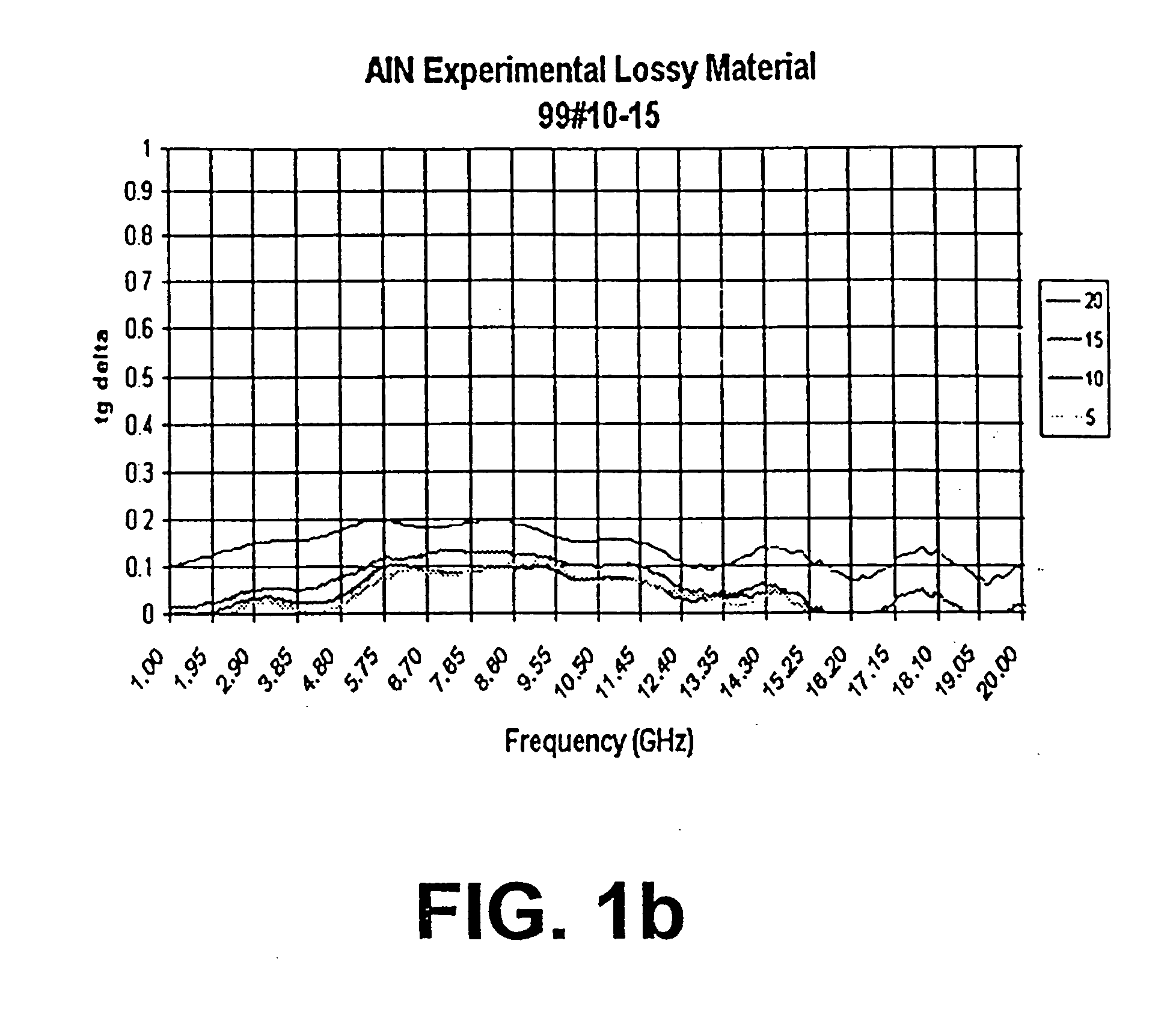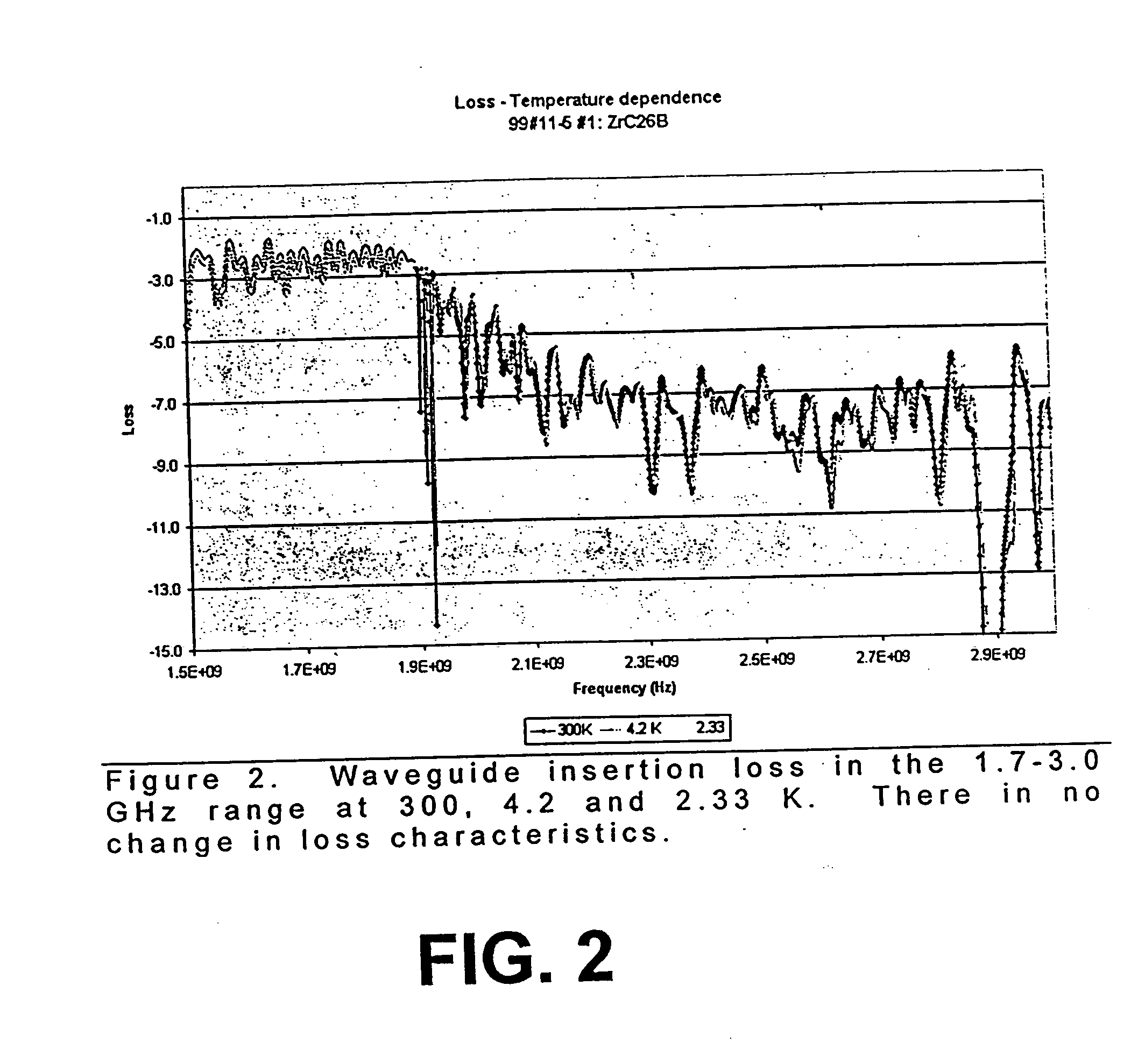Tunable lossy dielectric ceramic material having ZrC as a dispersed second phase
a dielectric ceramic and dispersed technology, applied in the field of ceramic materials, can solve the problems of material ineffectiveness at cryogenic temperatures, and achieve the effect of high dielectric characteristics and high loss tangen
- Summary
- Abstract
- Description
- Claims
- Application Information
AI Technical Summary
Benefits of technology
Problems solved by technology
Method used
Image
Examples
example 1
[0019] Several different samples of the composite material comprising of mixed AlN, ZrC and Y2O3 powders were formed using varying percentages of ZrC and Y2O3. Commercially available AlN, ZrC and Y2O3 powders were used. Powder mixing was accomplished using standard mixing techniques in a non-aqueous medium (isopropyl alcohol, hexane or similar). Powder was then dried, homogenized and screened. (Binders can be added to the powder, and the powder can be spray dried if required without deviating from the teachings of the invention.) The powder was then poured into a steel 4×4″ die, and uniaxially pressed to form a billet.
[0020] The billets were assembled into a graphite hot press die, and loaded into a hot pressing furnace. The billets were hot pressed in an inert atmosphere at temperatures from 1600-1950° C., and with applied pressures of 1000-4000 psi. The heating rates are dependent on the furnace and the load size, and temperatures holds in the 1650-1750° C. range are preferable i...
example 2
[0023] Several different samples of the composite material comprising mixed AlN, ZrC and Y2O3 powders were formed using varying percentages of ZrC and Y2O3. Commercially available AlN, ZrC and Y2O3 powders were used. Powder mixing was accomplished using standard mixing techniques in a non-aqueous medium (isopropyl alcohol, hexane or similar). Powder was then dried, homogenized and screened. (Binders can be added to the powder, and the powder can be spray dried if required without deviating from the teachings of the invention). The powder was then uniaxially pressed into pellets.
[0024] The pellets were subsequently pressureless sintered in a protective atmosphere at 1860° C. Table 2 shows that the resulting materials are lossy. It should be noted that further optimization of the raw powders, sintering temperature and material composition would result in improved material densities, but would not substantially alter the advantageous characteristics of the invention.
TABLE 2Pressurel...
PUM
| Property | Measurement | Unit |
|---|---|---|
| microwave frequencies | aaaaa | aaaaa |
| frequency | aaaaa | aaaaa |
| dielectric constants | aaaaa | aaaaa |
Abstract
Description
Claims
Application Information
 Login to View More
Login to View More - R&D
- Intellectual Property
- Life Sciences
- Materials
- Tech Scout
- Unparalleled Data Quality
- Higher Quality Content
- 60% Fewer Hallucinations
Browse by: Latest US Patents, China's latest patents, Technical Efficacy Thesaurus, Application Domain, Technology Topic, Popular Technical Reports.
© 2025 PatSnap. All rights reserved.Legal|Privacy policy|Modern Slavery Act Transparency Statement|Sitemap|About US| Contact US: help@patsnap.com



